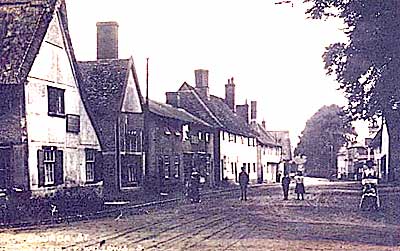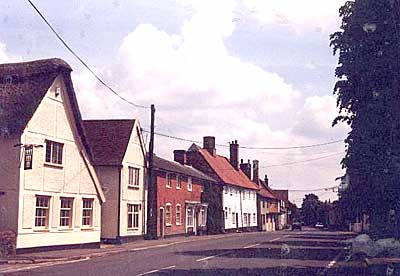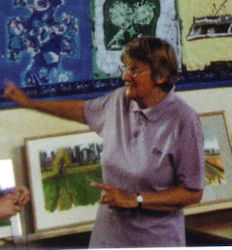About the group
The Walsham Village History Group was formed in the early 1980’s when Dr. Stanley West, then the County Archaeologist and living in Walsham, located the sites of several medieval houses around Cranmer Green. Wishing to find other sites he gathered a small group of local enthusiasts and, over the next few years, field-walked all the available land in the parish teaching them how to spot, identify and record their finds of pottery shards and worked flints.
It soon became apparent that many of the medieval sites were those referred to in a 1577 survey of Walsham [add pdf] and conjectural maps were drawn of the reconstructed medieval landscape. Work began on transcribing the original documents held at Suffolk Record Office including manorial court rolls, account rolls, rentals and charters together with parish registers and wills gradually building up a history of the village previously unknown. Some of this work has been published, some has been printed and is available locally.


In 1997 the first (then) Quarterly Review, consisting of original research, was printed. In 2001 it was decided to formalise the history group with a committee, constitution and a programme of talks and visits relating to the history of Suffolk in general and that of Walsham in particular. The group has started to record oral history and there is a programme of lectures, visits and walks for our membership. The group has gone from strength to strength and now has over seventy members.
Audrey McLaughlin (pictured right) had a deep and lasting interest in Walsham’s past and her contribution to the Walsham History Group must be mentioned here.
Walking the claylands of Walsham-le-Willows after autumn ploughing in a search for fragments of ancient pottery was considered a somewhat eccentric occupation for people in the 1970’s & 1980’s with an interest in history, particularly when you made your way back to a metalled highway after a couple of hours plodding across fields, your aching limbs dragging feet heavy with tenacious clay.

Yet here was the origin of Audrey’s deep and lasting interest in Walsham’s past. She helped to map the location of scores of Roman and Medieval homesteads to reveal a village layout quite different to our present village. This corroborated Sir Nicholas Bacon’s survey of 1577 in The Field Book of Walsham which had already been transcribed and edited by Kenneth Dodd.
But Audrey taught herself to read and transcribe the documents, wills, inventories, surveys, accounts, court rolls and to understand the evolution of timber framed buildings. Thus, over a period of twenty years she came to know and understand Walsham’s past, to identify an earlier landscape from the fragments which remain today and to appreciate something of the lives of its inhabitants.
Along the way she enthused others to work with, alongside, or independently of her but always wanting the knowledge and understanding gained to be accessible to the general public. For some years static displays and informative exhibitions were staged in the Scullery of The Priory, in The Guildhall and later in St. Mary’s Church.
A programme of lectures and informative walks was instituted. From 1997 Audrey edited items of research for publication in The Walsham Village Museum Quarterly Reviews. These can be found via the main menu under History. The culmination of her work was the publication of The East Anglian Archaeology Report number 85, “Towards a Landscape History of Walsham” and written jointly with Stanley West. But other publications followed documenting yet more of our village history.
On moving to Halesworth, this rigorous and indefatigable researcher embarked on the more difficult project to uncover something of the history of the group of parishes making up South Elmham, onetime seat of Anglo Saxon Bishops and her own chosen final resting place. Here in Walsham she leaves a fine legacy of research and education. She was truly inspirational.


